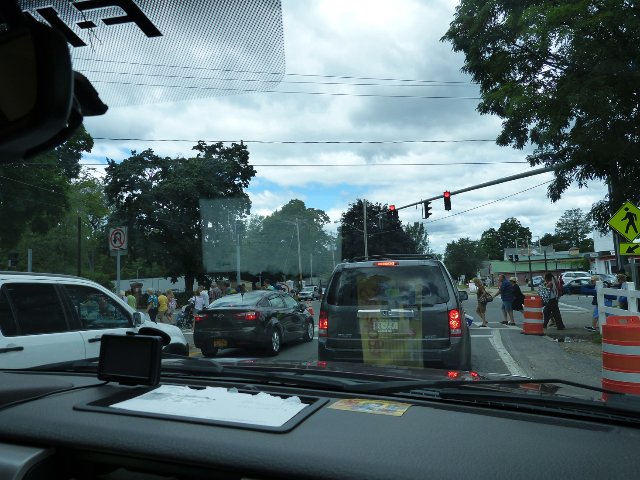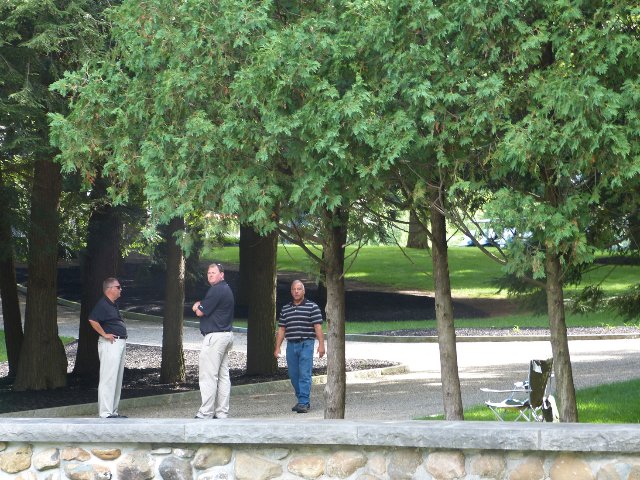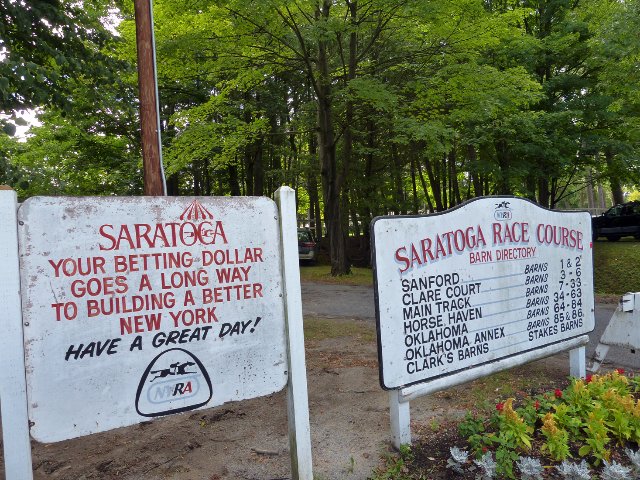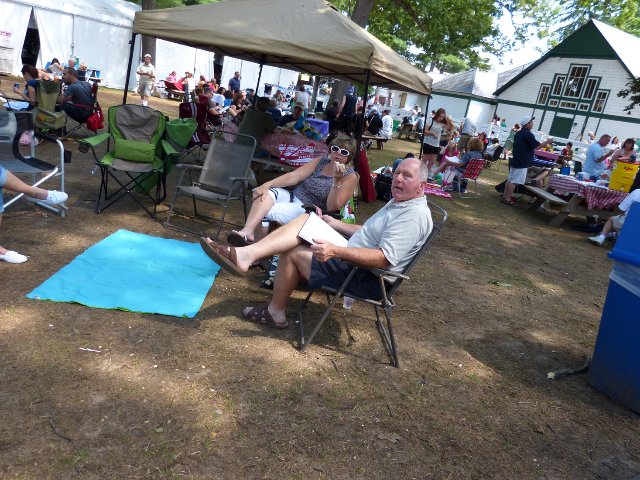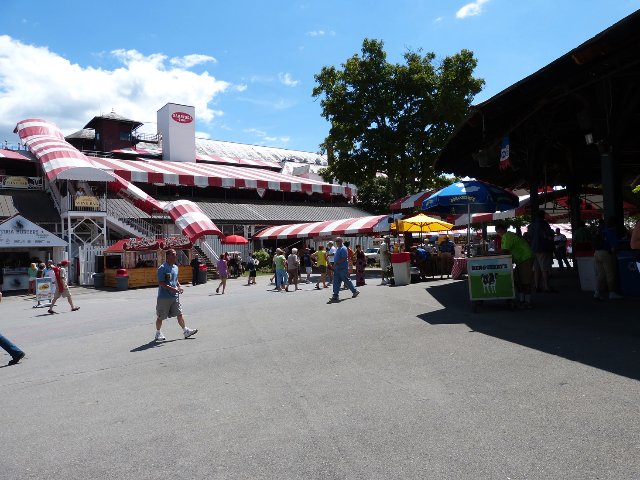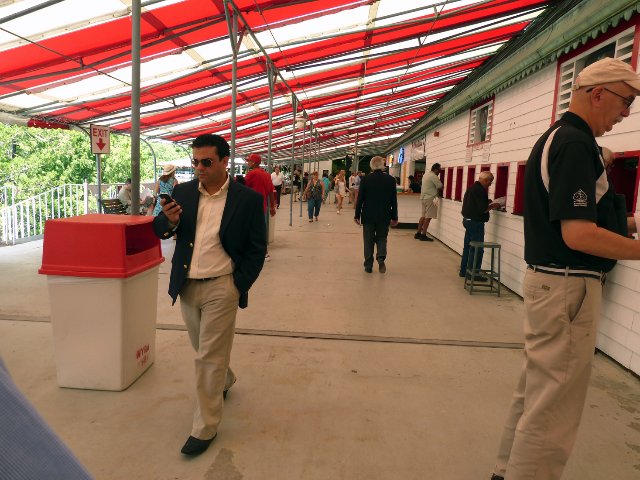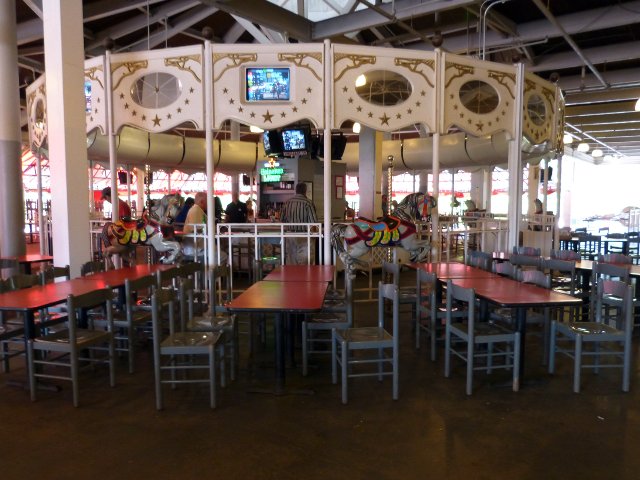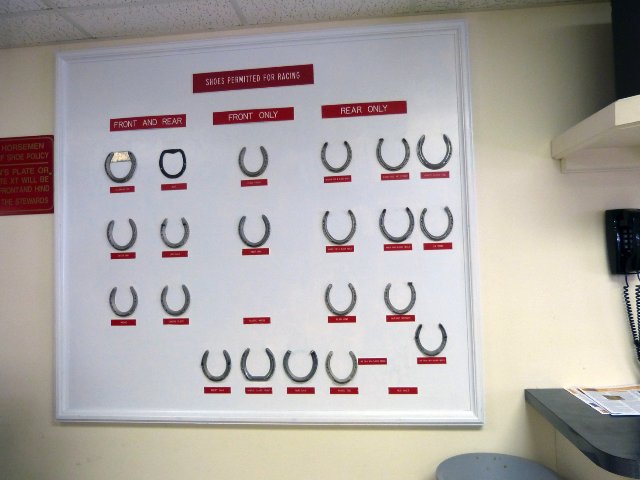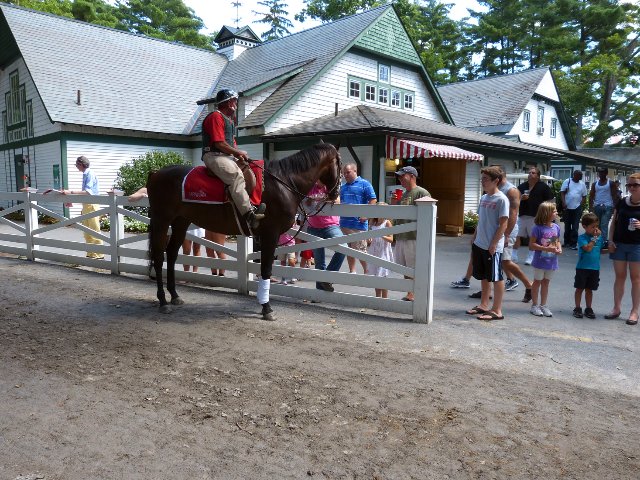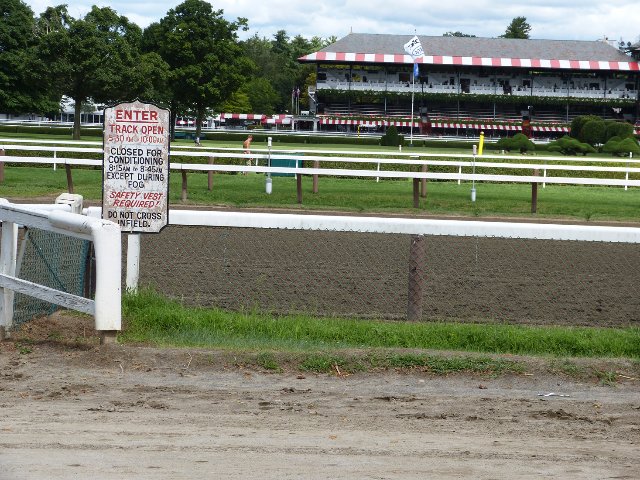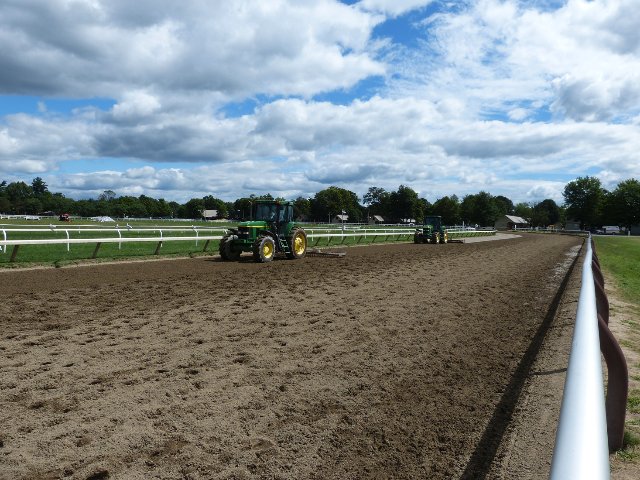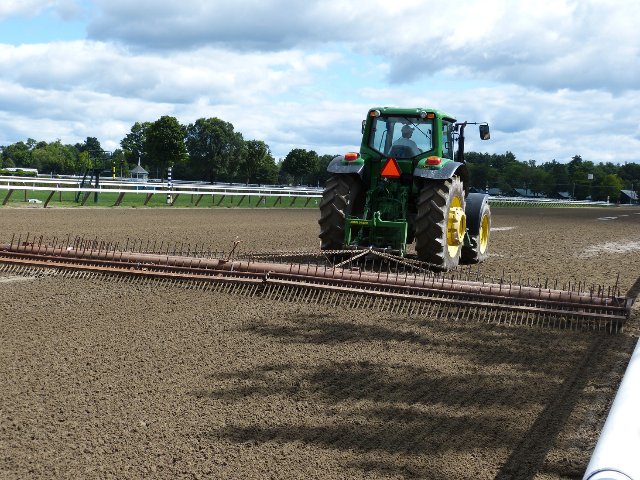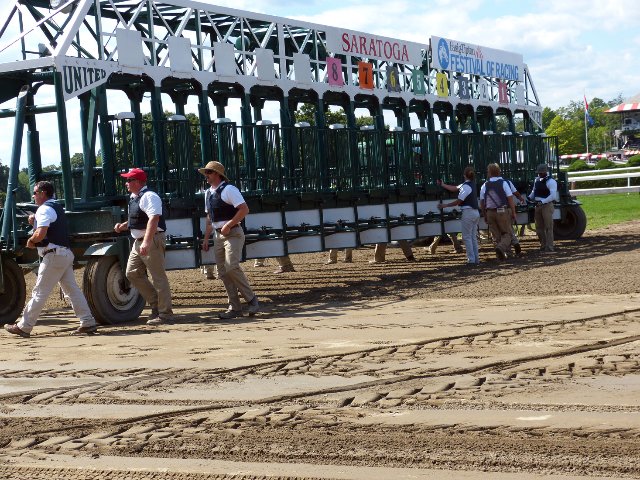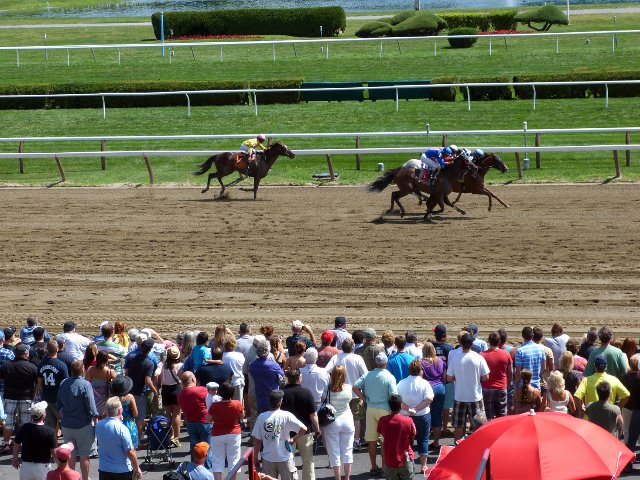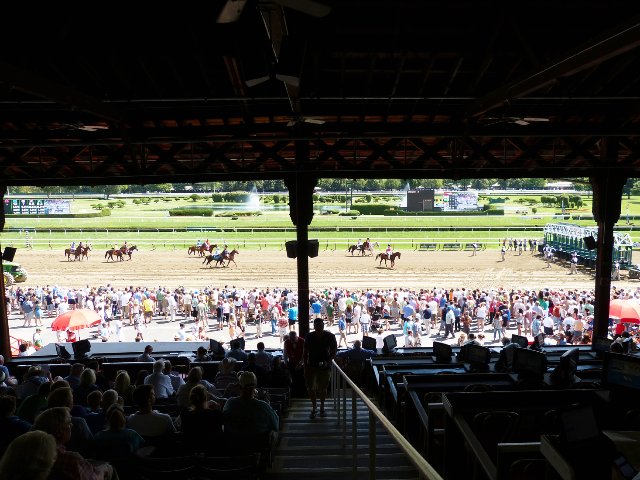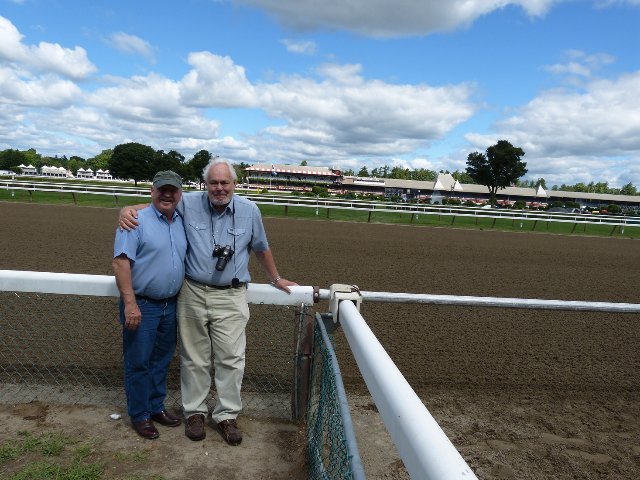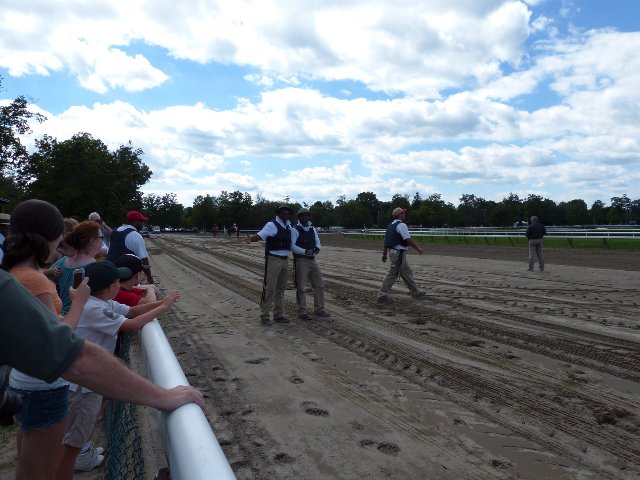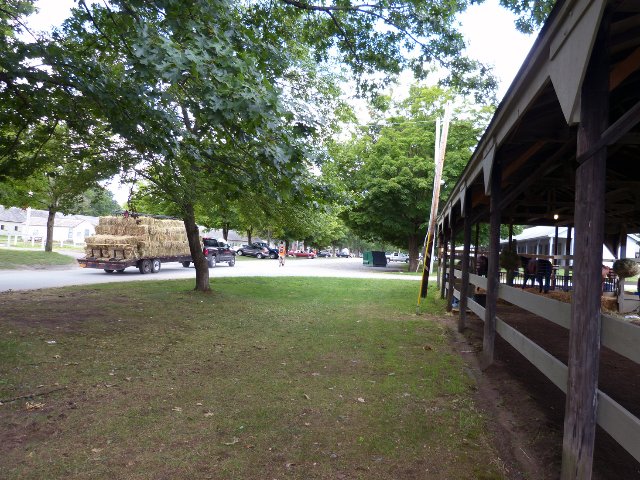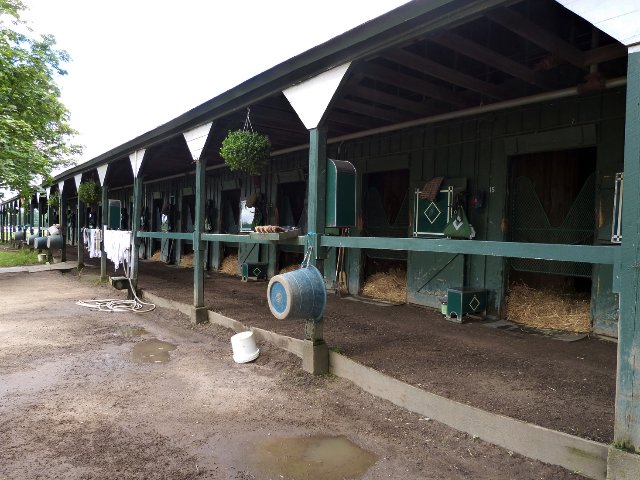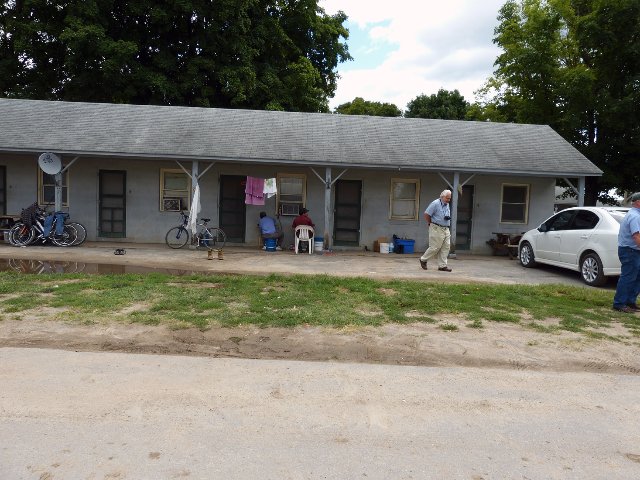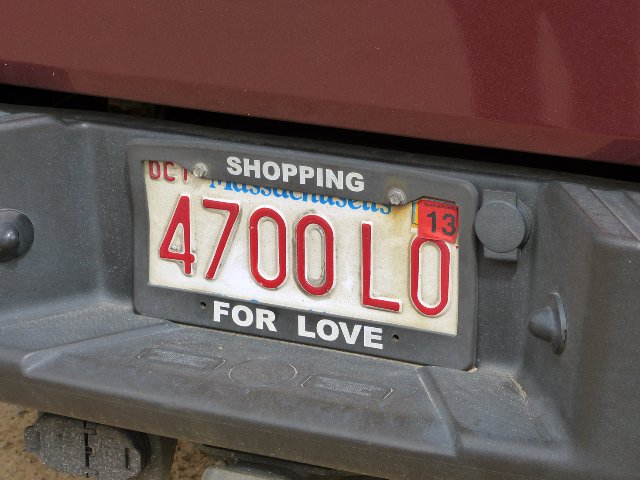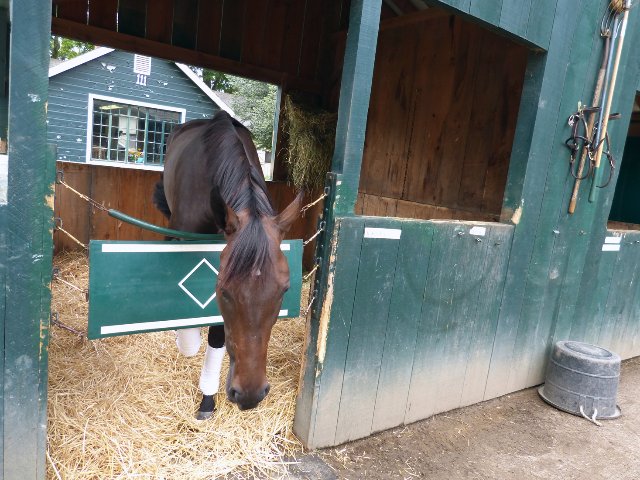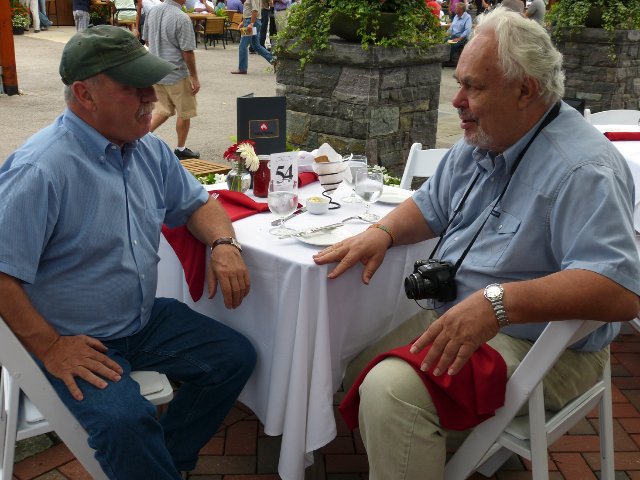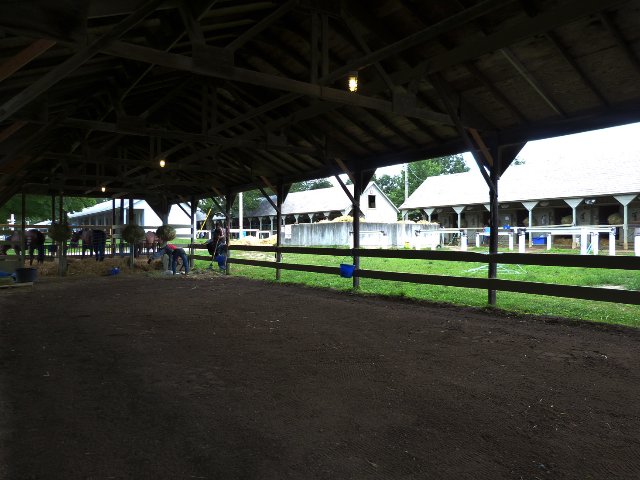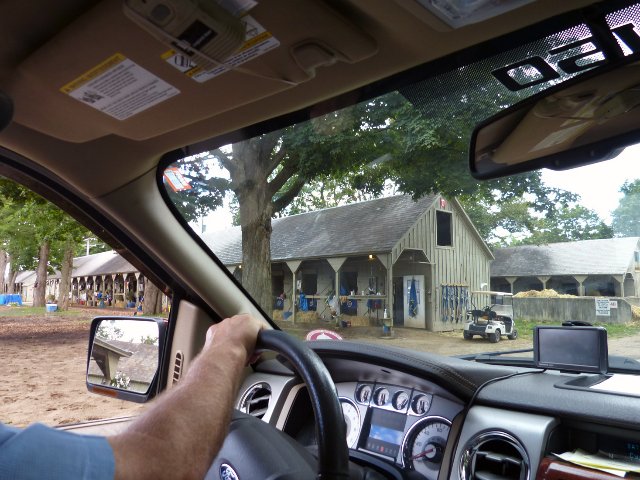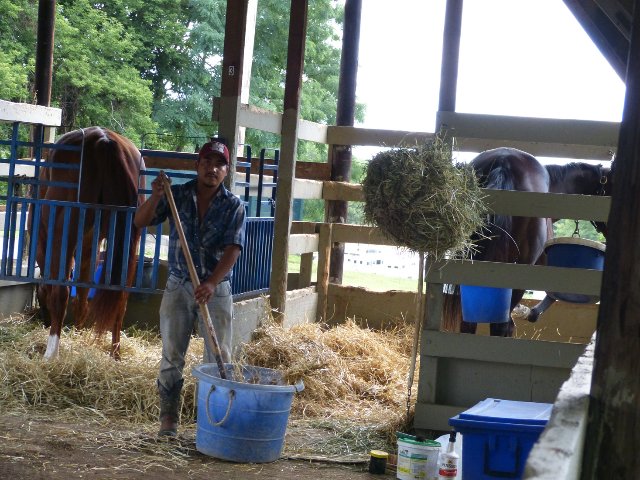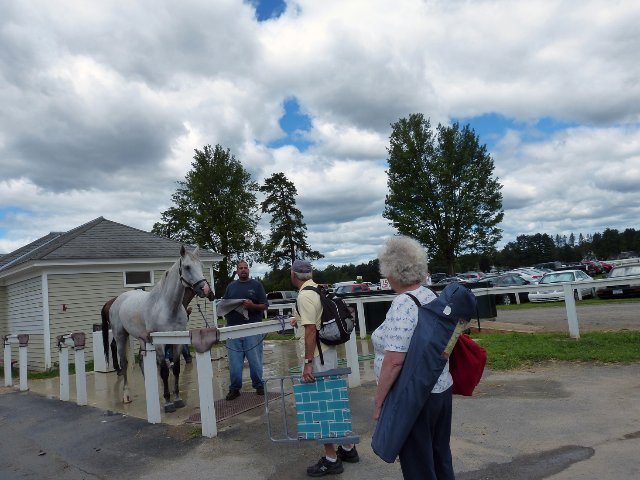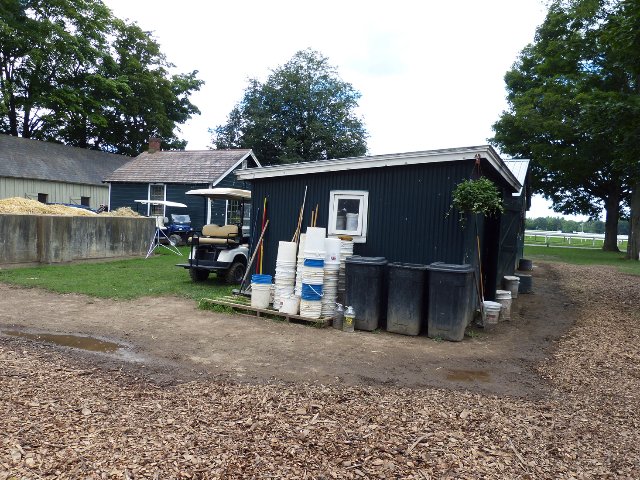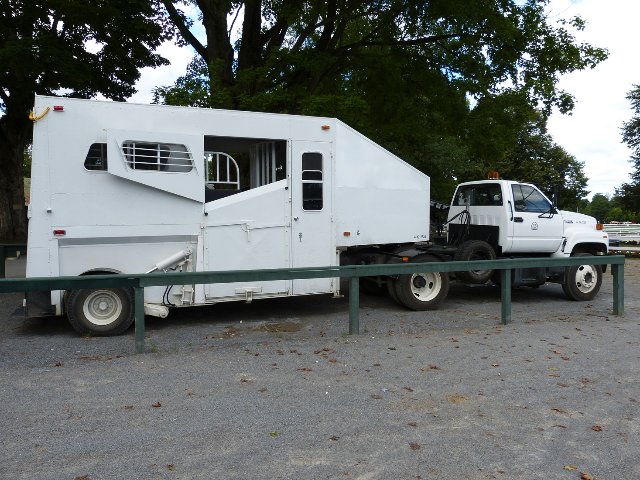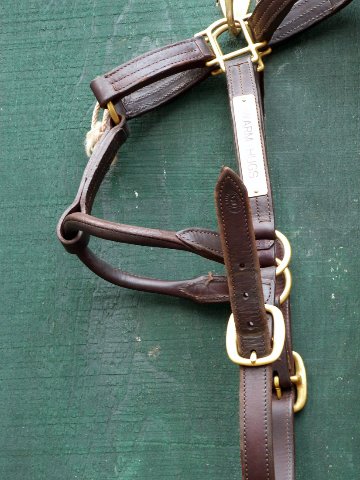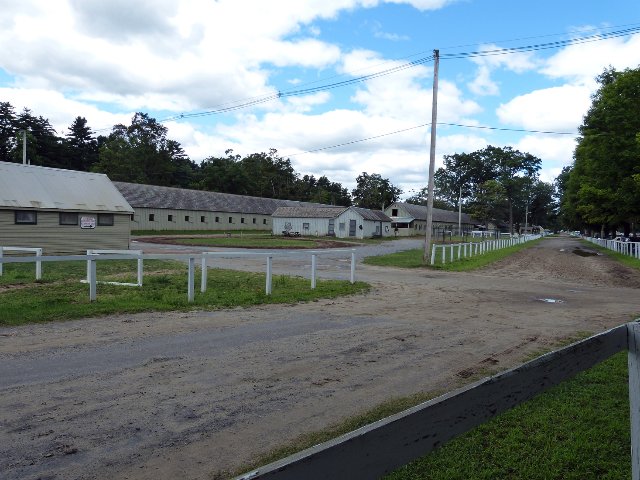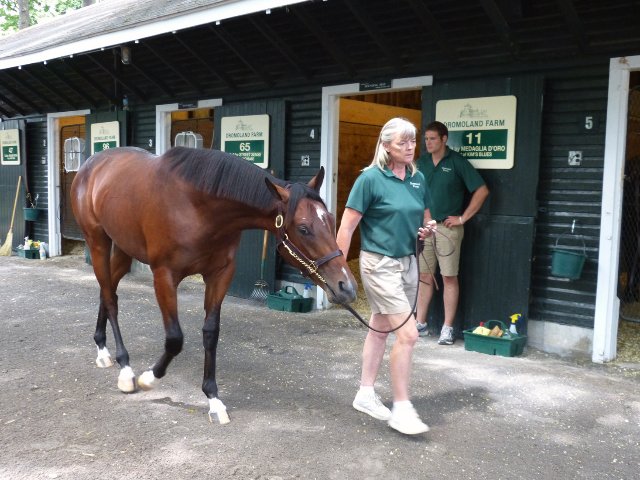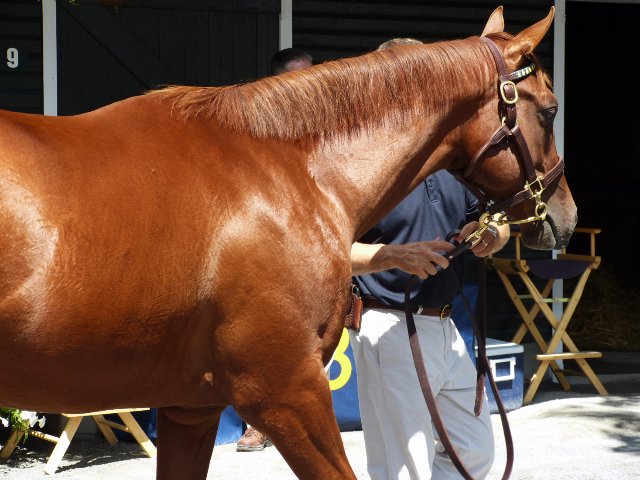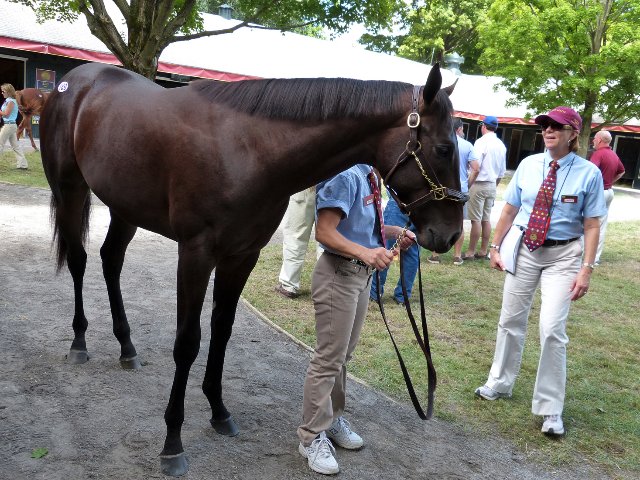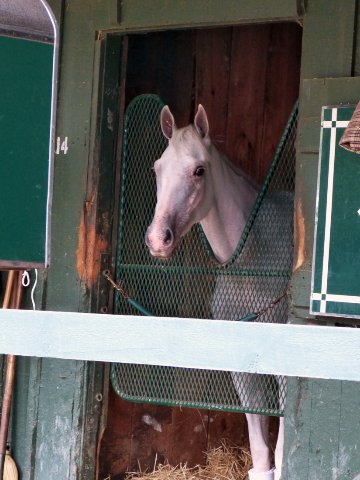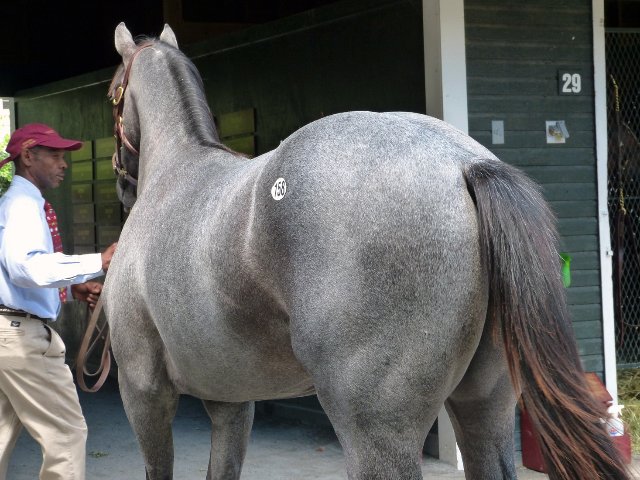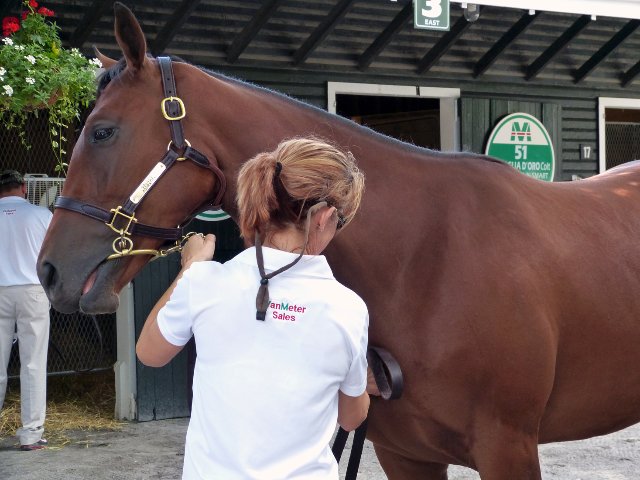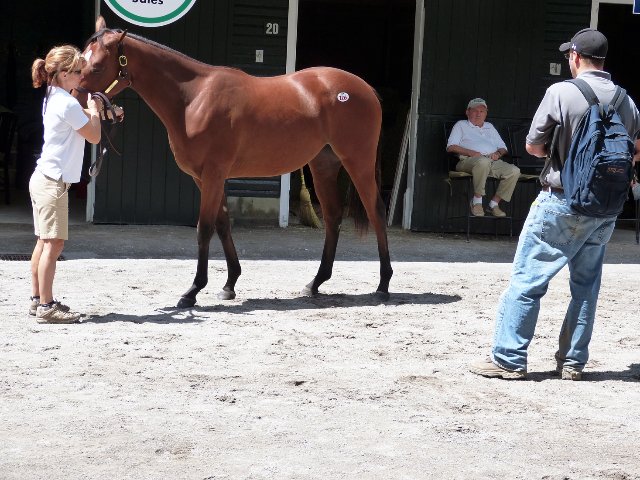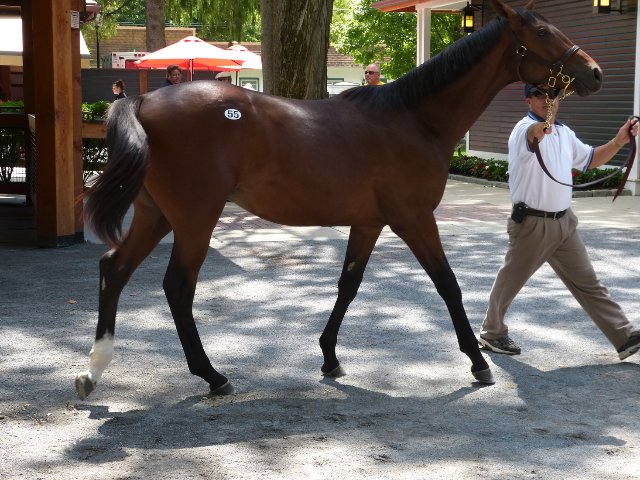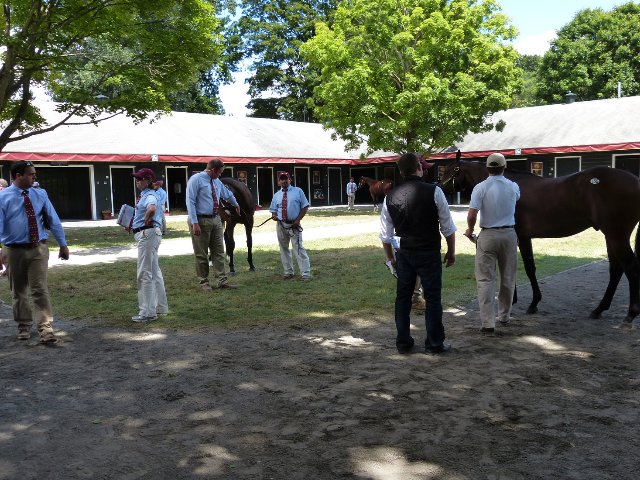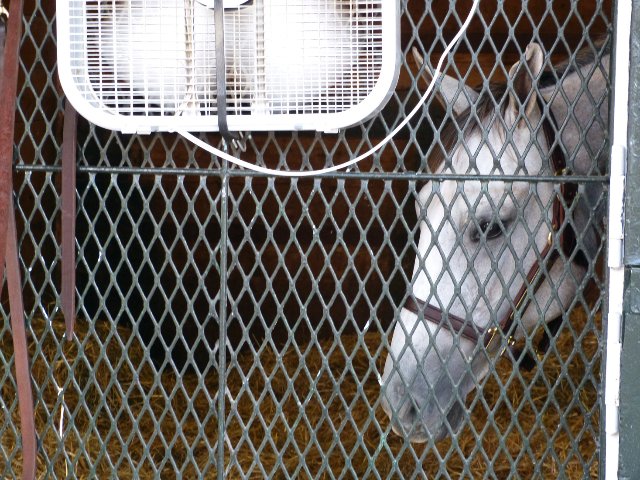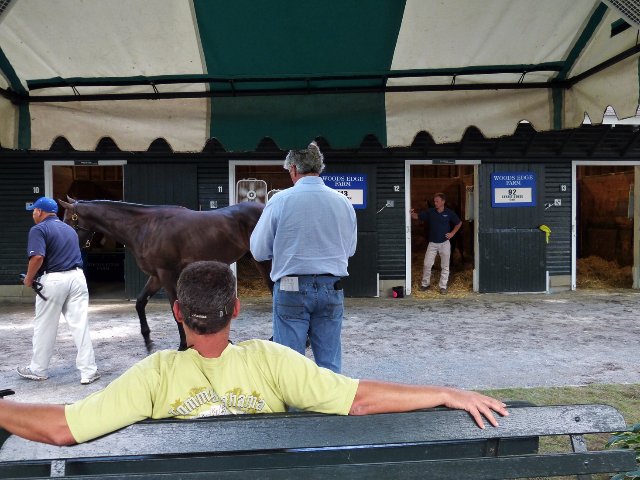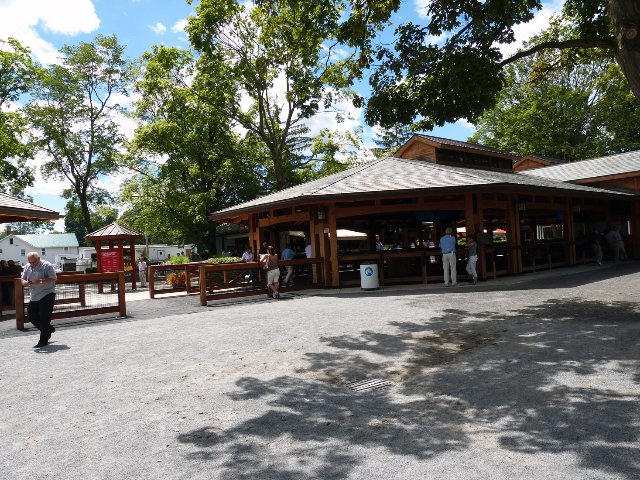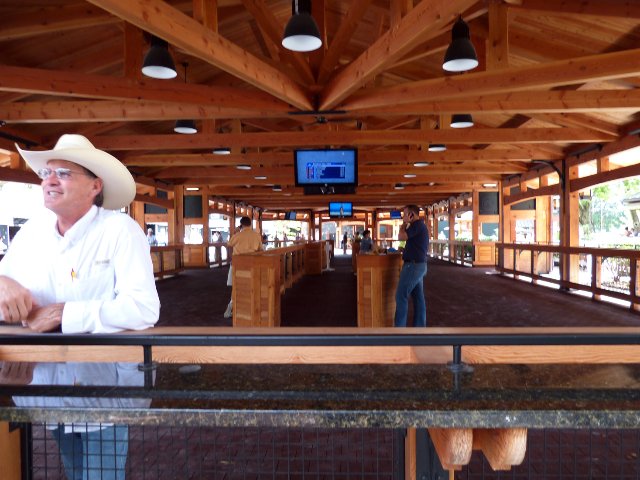Saratoga: A Day At The Races
And Behind the Scenes
By: Astrid Hiemer - Aug 19, 2012
The Saratoga Race Course is open to the public yearly from July 1st until September 30th for races and other festivities. Racing ends on Labor Day. Please check out the official New York Racing Association website.
What an introduction to Saratoga! It was the short lived TV series ‘Luck’ that inspired me to bid on a silent auction offer for ‘A Guided Tour at the Saratoga Race Track.’ I held out for the final bid and won. The charity auction and evening to benefit the American Cancer Society was organized by Lisa Blackmer and Michelle Jensen in North Adams, Massachusetts on the day of the Kentucky Derby in May. It was a fun and beneficial affair.
We will remember the day we spent with Donald George, our guide, who is a horse owner and trainer, for a long, long time. Monday, August 6, turned out to be a perfect dry and sunny day. We were able to reschedule for the occasion when Yearlings could be seen up close. The young, magnificent horses arrive from farms and barns all over America for auctions that takes place within two weeks. To see those young horses, a few hundred chosen from a much larger pool, and visit the new facilities, built specifically for business transactions once a year, was the highlight of our trip to Saratoga Springs.
The buzz was that the ‘Sheik’ would determine the prices for the horses that day at auction, based on his bidding. A minimum bid is set at $ 5,000 for certain horses and for others the prices would reach millions of dollars. And, to quote Don, who is a very friendly man: “The horses will never look better than during auction days.” But, I’m getting ahead of myself.
Don picked us up at home in Adams and drove us in his very comfortable Ford truck via short cuts through Pownal, NY, and several small towns along the beautiful Saratoga Lake. First, we stopped at the restricted area where only people connected to the race track have access. We received day passes and felt like insiders. Along the way we passed entrances to the estate owned by a Saudi Arabian horseman (or horsemen), which actually borders the race tracks on that side. What beautiful property and stables. While I photographed from the truck at one of the gates, a security guard called out: “You are not going to throw out a rifle, are you ?” We assured them, that we were just ‘shooting photos.’
Our next short stop was at the Saratoga Casino, nicely situated. I walked inside and was bombarded by the noise of hundreds of slot machines. The sounds reminded me of a weekend in Las Vegas, and that was sufficient. Surely, one can also become a big looser quickly, perhaps at a billiard or black jack table. But with camera in hand I was not allowed to investigate.
We drove to the main entrance of the Saratoga Race Course, the entrance fee is only $ 3, small enough for almost anyone interested, a real ‘Volksvergnuegen,’ fun for everyone. Don remarked that he was surprised to find so many people at the races on a Monday. Of course, New York State wants your money, as a sign freely announces: ‘Your betting dollar goes a long way to build a better New York. Have a Great Day!’ We walked through hundreds of clusters of spectators, who were picnicking. The races can be viewed on monitors from that area, and people were following the races in the daily paper. We walked into the administrative office for Saratoga Races and photographed the different horse shoes allowed there. Then we made our way to the Grandstand and the Clubhouse, high enough above ground to take an escalator. From up there the track looked small, while we watched a couple of races.
We walked around to the computerized self-betting 'windows,' which were not busy, but people were lined up at the real windows, where one could put down hard earned cash. After a big loss or win, the road leads to the Carousel, which is actually a bar, for a stiff one. Back on the ground, we encountered one jockey along the ‘Jockey Path,’ indicated by two red lines. It is the route to and from the race track and the locker rooms. A jockey, seated on a ‘pony,’ was answering questions from a cluster of people. The so called ponies accompany horses and jockeys to and from the race track. The ponies must have a very peaceful temperament.
By then it was lunch time and we headed over to the restaurant at the fancy Yearling’s compound. We enjoyed our respite, while Don answered many more of our questions and offered a wealth of information and stories, covering forty years at the races and his love and business experiences with horses. One story, he’ll allow me to recount:
Don and his partner Dennis D’Arcangelo bought ‘Shopping for Love’ (SFL) in 1998 and raced her for four years. SFL won races on many tracks all over America. She won races at Belmont Park and Aqueduct Race Tracks on Long Islands, New York, and Rockingham Park in Salem, New Hampshire, and more, but never at Saratoga. SFL was voted the New York State Filly of the Year. Then she was sold for breeding purposes and ‘Shopping for Love’ went to England for tenfold her purchase price. None of her offspring won races and years later, she ended up in Australia, sold for $ 20,000. Such is luck and bad luck in the horse trade!
Don introduced us to the Agency Taylor Made and Mark Taylor, who had sold SFL for them and we enjoyed listening to more horse stories. What a delight! There are approximately 200 stalls for Yearlings on the premise. Horses get bought and sold on several days during the two week period. While we were there, Don asked for # 11 to be seen by us, what we thought to be a million dollar horse, a beautiful Yearling. We also observed other activities, horse owners and buyers looking over various horses and so we formed our own opinions about the horses and activities. I was drawn to grey horses and a beautiful golden horse. Some of the Yearlings were already named; mostly that honor is left to the new owner.
All Yearlings will be shown in succession in an outdoor arena before the auction. Then, one horse at a time will be seen and auctioned off in the nearby auction house. It is an impressive Oval, the seats reach up all the way to a second floor level. How many people would arrive later that day to observe and sell or buy horses? The auction started at 6 pm, while we were already on our way back home.
From the Yearling’s Compound we walked over to the back side of the race track to see a couple of races up close. The start machines throughout the afternoon would be moved around the track for the different lengths of each race. What a thrill to be so close to the track, yet we could not see the winners. However, on the other side, one could walk up to the fence below the Grandstand near the finish line. That day, it was a hot and tarred proposition, too hot for us.
We walked around the stables, where the ponies are kept and to another area, where trainer Bill Mott has approx. 20 stables. Mott apparently arrives in the wee-hours of each day and leaves by 10 am. Horses are trained very early in the morning. We got close to a couple of them with single stalls, close enough to photograph but dared not touch. We observed a horse receiving a shower. Saddles and bridles have their special places. Several saddle backs were flung over a rail. Everything is kept meticulously clean. We arrived at old stables with slate roofs, which were surrounding the old track, known as the 'Oklahoma Training Track.' Horses, horses, everywhere horses. What a great sight!
The Saratoga Race Course is the oldest organized sport venue of any kind in the United States, opened in 1863. A year later, the ‘Travers Stakes’ began as the oldest major thoroughbred horse race and still today, it is the main event of each season. A couple of nicknames for the track are: House of Upsets and Graveyard of Champions, because ‘Secretariat’ was defeated here by ‘Onion’ after winning the 'Triple Crown.' And, going back to ‘Man o’War’ - the other legendary race horse - he was defeated only here, while winning twenty times.
Don’s current Yearling was sold last Sunday to a syndicate of ten people, where everyone owns a small share. Don decided to hold on to 20 % of his horse and he will now name him ‘ Hoosac Tunnel.’

